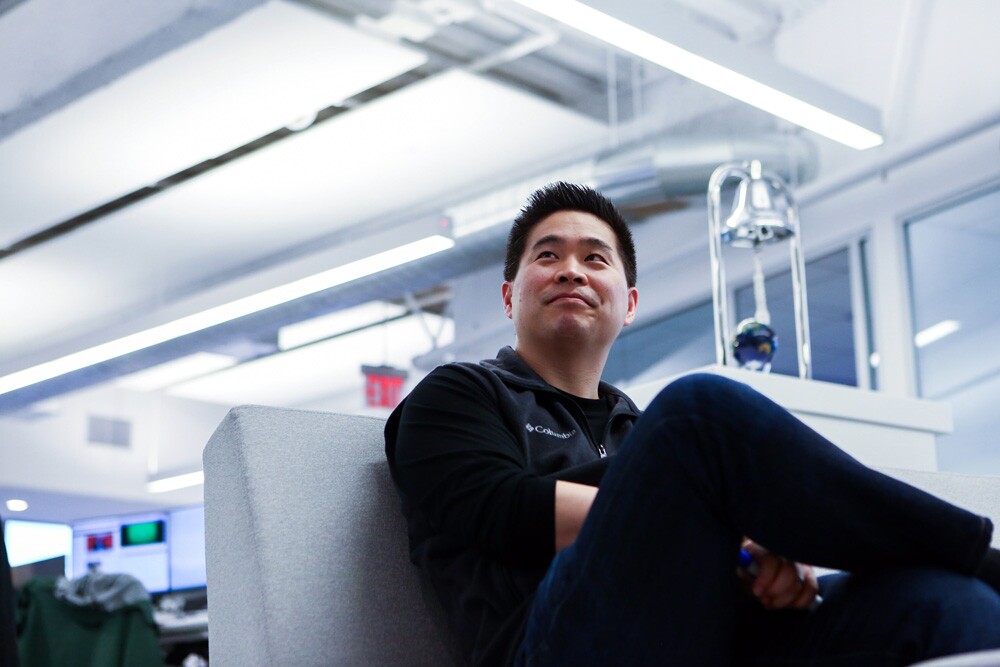IEX — the exchange made famous by Michael Lewis’s book Flash Boys — claims its competitors NYSE, Nasdaq, and Cboe are overcharging for data and connectivity, and has published its own previously unseen cost data to support the allegation.
IEX co-founder Brad Katsuyama joined up with some colleagues and launched IEX as an alternative after experiencing the effects of high-frequency traders on the markets when he was global co-head of electronic sales and trading at RBC Capital Markets. IEX became a regulated stock exchange in 2017.
On LinkedIn Tuesday, Katsuyama posted a letter which disclosed IEX’s costs for providing market data and connectivity to its members.
Other exchanges charge fees for “depth-of-book” data products that are 900 to 1,800 percent more than IEX’s costs to offer something similar, he claimed in the letter to Brent Fields, secretary of the Securities and Exchange Commission. For physical connectivity in their dsyata centers, other exchanges charge fees 2,000 to 4,200 percent over IEX’s costs to offer comparable services. For virtual sessions needed to trade — what’s called logical connectivity — other exchanges charge fees 500 to 1,800 percent more than IEX’s cost to offer comparable services, the letter claimed.
“The disclosure provides critical evidence that supports long-held industry complaints that NYSE, Nasdaq, and Cboe have been abusing their regulatory position by charging excessive markups on products that many participants require to conduct their business,” wrote Katsuyama.
IEX’s detailed disclosures contains the methodology, including underlying costs that are included in its calculations, the different forms of certain products such as market data, and other granular information.
IEX maintains that disclosure matters for exchanges, as government licenses give them unique powers. “Exchanges also have unique commercial power over their members and investors because participants are effectively required to connect to and obtain market data from all of the three entrenched exchange families,” wrote Katsuyama.
Phil Mackintosh, chief economist at Nasdaq, said in an interview that he disagrees with IEX’s calculations. “It’s dubious accounting,” he said of the disclosures. Mackintosh pointed to an IEX blog titled “Shakedown in New Jersey.” In it, IEX said its costs were $630,000 for connectivity. Now that has risen to $1.8 million, Mackintosh said, but their accounts show earnings above $70 million from trading.
In an unpublished blog post reviewed by Institutional Investor, Mackintosh wrote about the economic problems of providing free services. (IEX’s business model includes offering free connectivity and market data.)
“It’s known as the free rider problem,” he wrote. In a market with joint products, like a stock market, those who pay for other products end up subsidizing the free product — essentially they pay more than needed for the ‘other’ products. Data we have show that a user-pays marketplace is better for all participants.”
Mackintosh argued in the post that all-in costs to trade are what matters. “Large market makers and international brokers tend to purchase a full range of products. However, even if we add the costs of colocation, data, and trading per share for each of the exchanges we see that the costs, including SIP [Securities Information Processor] allocations, range from 0.067 to 0.091 cents per share (6.7 to 9.1 mils). That is less than 10 percent of the average algorithm commission of 0.9 cents per share reported by Greenwich Associates.”
In the interview, Mackintosh said Nasdaq had divided each exchange’s revenues by the volume of shares traded. IEX was the most expensive per share traded. “Does it matter if you are charged for data? What you care about is the total cost,” he said.
“What solves the problem best is to let people choose the service that they want. With IEX, if you trade with them, you pay full freight. With us, if you want just co-location, we’ll charge you just for that.”
In the blog, Mackintosh wrote that, “Given the fundamental role of the market is to allocate capital efficiently, it’s a little bizarre that professional asset allocators think creating a free rider problem is good for markets. Data show that not only do customers have a lot of choice when connecting to each exchange but also when faced with the economic costs of consuming a service they actually do make choices. That’s good for everyone who doesn’t want to pay for someone else’s consumption. It’s also good economics.”
Katsuyama said in the letter that its overall costs include the same underlying services as other exchanges. “The potential profit margins that are implied by our study, on their face, contradict the claims by the major exchanges that the fees they charge the industry for their market data and connectivity are fair, reasonable, and competitive. In simple terms, the markups charged by the three entrenched exchange operators are only possible in markets where exchanges have de facto monopoly control over products that many participants require to conduct their business,” wrote Katsuyama.
Last October, the SEC hosted a roundtable to discuss the issue of market data and connection costs with exchanges, investors, brokers, and others. NYSE, Nasdaq and Cboe argued that competition forced them all to set fair fees.
[II Deep Dive: In Rare Move, Big Pensions Band Together To Take on Stock Exchanges]
IEX has been at the center of controversy since its founding as a dark pool in 2013. IEX, with backing from asset managers that included Franklin Templeton Investments and OppenheimerFunds, was designed as an alternative trading system where long-term investors wouldn’t get trampled by high-frequency traders.
IEX’s primary innovation was a 350-microsecond so-called speed bump that negated the advantages of some high-frequency traders.







